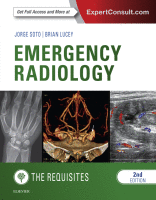Physical Address
304 North Cardinal St.
Dorchester Center, MA 02124

Advances in the understanding and knowledge of disease and the development of newer treatment methods, along with the increasing skill of health care providers and their expanding ability to treat disease, have made medicine a rapidly expanding frontier. The increasing…

The term vascular emergency carries a critical sense of urgency given that the integrity of the vascular system is crucial to maintain the vital blood supply to the various organ systems. Consequently, certain clinical scenarios demand immediate action to determine…

Many diseases that affect the abdomen may also extend to involve the pelvis. These diseases are described in Chapter 9 . In addition, trauma does not respect anatomic boundaries, and pelvic injuries that occur as a result of trauma are described…

Nontraumatic acute abdominal pain may have a wide variety of causes. When diagnostic imaging is clinically indicated in the evaluation of these patients, localizing the signs and symptoms is critical to properly triage the patient so that the correct imaging…

An emergency medicine physician once told a bright-eyed medical student on the first clinical shift, “All kinds of problems bring people in to see us with chest complaints. But just remember this—your job is to make sure nobody leaves the…

Traumatic Spine Injury Background and Imaging Algorithms Spine injuries are quite common, with more than 137,000 cases entered into the American College of Surgeons National Trauma Data Bank in 2014. Major causes include motor vehicle collisions or pedestrian strikes, falls,…

Imaging in children differs from imaging in adults because of the unique illnesses of children and their wide range of size, varying ability to hold still and cooperate, and relative sensitivity to ionizing radiation. The primary goal of the pediatric…

Most true emergencies of the musculoskeletal system are traumatic in nature. Musculoskeletal trauma is reviewed in other chapters. Neck and back pain are the most common nontraumatic musculoskeletal conditions leading to emergency department visits (National Hospital Ambulatory Medical Care Survey—Emergency…

The use of medical imaging for evaluation of patients with orthopedic trauma has contributed to accurate diagnosis and subsequent management. In the era of modern medical technology, a wide range of imaging modalities are available for assessment of orthopedic trauma.…

Blunt and penetrating abdominal trauma are two of the more common indications for radiologic investigation in the emergency department setting and are common causes of morbidity and mortality among patients admitted to trauma centers. Many of these patients have multisystem…